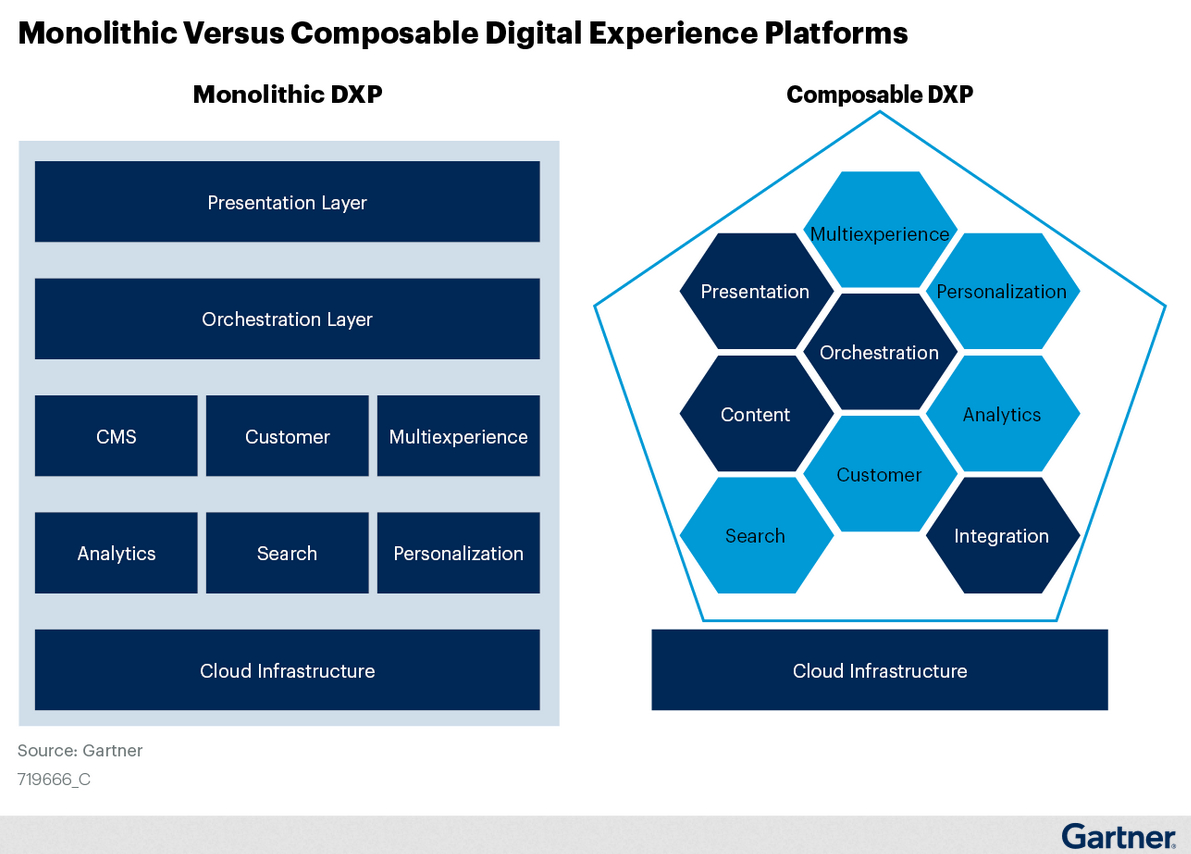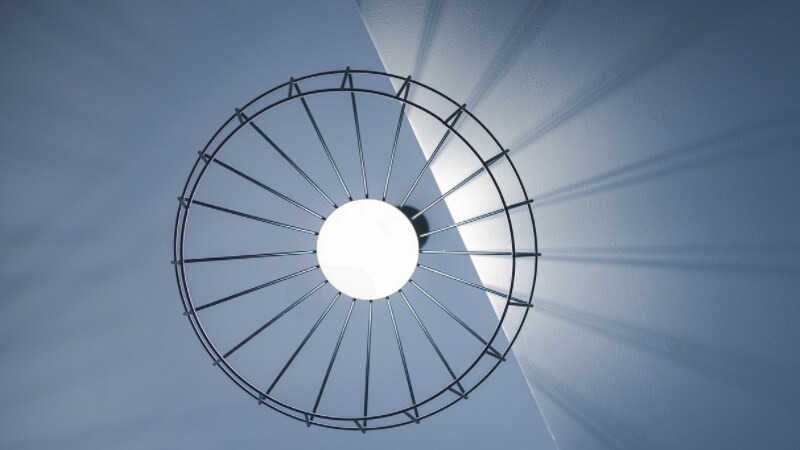Is it time to focus on a composable DXP? Should you upgrade to a new Sitecore version instead?
Sitecore has seen massive changes over the past year. With new acquisitions and restructures, you may be wondering if your current Sitecore solutions like XP or CDP still cut it, or if they’ve become outdated.
Should you focus on a composable DXP instead?
This article will help you weigh your options so you can keep setting your business up for success.
How Has Sitecore Changed? Embracing a Composable Future
Since early 2021, Sitecore has made big moves to acquire numerous SaaS products and pivot toward becoming a composable DXP. Well, the marketing automation platform Moosend was acquired and became Sitecore Send. Additionally, composable commerce solution Four51 transformed into Sitecore OrderCloud.

Furthermore, AI search engine Reflektion was integrated as Sitecore Discover, Boxever became Sitecore Personalize, and most recently, Sitecore transitioned its core CMS to Sitecore XM Cloud, a stand-alone SaaS solution.
With these shifts, Sitecore has evolved into a composable DXP, most evident with the introduction of XM Cloud. Now, Sitecore customers no longer have to buy the full suite of products but can integrate them individually.
These acquisitions and restructures will empower Sitecore to provide customers with more freedom and flexibility in delivering personalized omnichannel experiences. Brands will have the option to build their own best-of-breed ecosystems and tailor their technology to meet unique needs.
Upgrading to a newer Sitecore version Vs. moving to the composable architecture
• If you're pleased with Sitecore XP's features and functionality, upgrading to the latest version will likely be sufficient. Moving to composable could involve significant changes.
• If your organization utilizes most of the capabilities Sitecore offers, upgrading will allow you to continue gaining value from the platform.
• Cost is a factor. If the current cost of Sitecore XP ownership is manageable for your business, re-platforming may introduce additional expenses.
• Recruiting talent with Sitecore expertise can be difficult. If you haven't struggled to find qualified employees, upgrading will likely be easier.
• Upgrading to the latest Sitecore version will likely be more straightforward and familiar if the cost falls within your existing technology budget.
Overall, moving to a composable architecture can provide benefits like increased flexibility, scalability, and extensibility. But there are trade-offs in terms of effort, cost, and expertise required. Businesses should carefully weigh these factors based on their current situation and goals.
The Composable DXP Pivot
• If your current Sitecore platform is not delivering the performance or functionality you need, a composable DXP could give you more flexibility and agility.
• Businesses that only utilize parts of the Sitecore suite may benefit more from standalone solutions for each part (CMS, CDP, commerce, etc.). This can reduce costs.
• Avoiding duplicate spending on features you already have from other solutions is a compelling reason to break up the monolithic DXP.
• Talent challenges and difficulties in recruiting Sitecore experts can be more easily overcome with best-of-breed solutions that have stronger skill availability.
• General hesitation or uncertainty about upgrading an existing Sitecore solution may signal it's time for an architecture change.
In summary, a composable DXP strategy can:
• Better align with your current and future business needs
• Reduce costs by eliminating overlap
• Leverage expertise from standalone solutions built by specialists
• Provide more flexibility and agility to adapt over time
However, there are also potential downsides:
• Increased complexity in managing multiple solutions
• More integration work between components
• Fragmented data and experiences across tools
Benefits of Composable DXP
| Benefit | Impact |
|---|---|
| Establishes an intelligent architecture | - Connects with internal and external systems through APIs and an open-platform microservices architecture, allowing marketers and developers to make changes in the back end and front end simultaneously. - Improves administrative efficiency and supports continuous deployment of applications. - Enables business departments to continue using preferred systems and tools. |
| Creates an integrated control center | - Integrates with solutions across the organization, enabling brands to control omnichannel content management, customer data, and analytics. - Drives connected and consistent customer journeys, resulting in increased customer retention. |
| Accelerates time-to-market | - Brands that adopt a composable DXP approach deliver new features 80% faster than those without a composable DXP. |
| Improves content flexibility and optimization | - Uses hybrid-headless and microservices architecture to deliver optimized content across channels. - Enables marketing teams to track asset and campaign performance with robust testing capabilities. - The most advanced composable DXPs can automate this process with AI and machine learning. |
| Increases customer visibility | - Integrates all systems that connect with customers, such as contact centers, social media, and CDPs, providing a 360-degree view of each customer. |
| Optimizes touchpoints | - Enables brands to deliver consistent experiences across various touchpoints, such as web, social, mobile, e-commerce, chatbots, voice, customer portals, and kiosks. - Allows brands to leverage data to re-engineer policies, processes, and practices to maximize customer satisfaction. |
| Establishes future-proof adaptability | - Integrates with new best-of-breed technologies, allowing brands to adapt with their target audiences by efficiently replacing or upgrading tools. - Prevents a bottomless pit of technical debt. |
Let QEdge Help You With Your Assessment
Even if you’re unsure whether you want to upgrade to the latest version of Sitecore XP or break down the suite into its parts and move toward a composable DXP, now is the best time to consider your options.
Sitecore will eventually complete its pivot toward being a composable DXP, and sometime in the next 12 months, you will need to decide. Whether you upgrade to the latest version of XP or embrace a composable DXP, it’s in your best interest to upgrade sooner rather than later. Without upgrading, you might miss out on Sitecore’s improved capabilities for personalizing the digital experience, integrations with best-of-breed solutions, increased simplicity for your marketing team, and greater agility for your developers.
QEdge is a certified Sitecore China Partner with years of expertise in working with the platform. We can help you audit your current system and determine which option will work best for your business.







